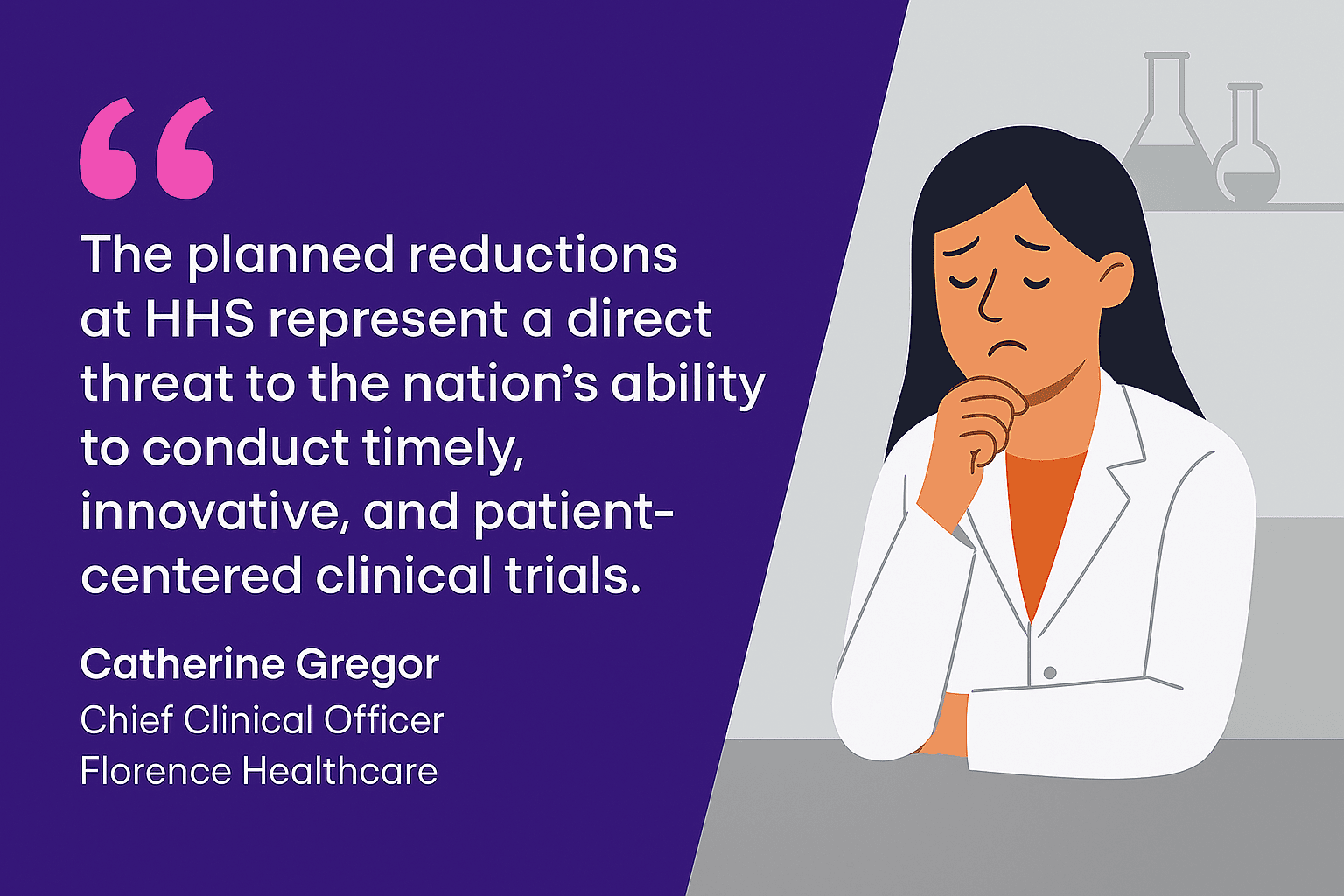Blog
April 30, 2025
Jim WagnerFour Ways HHS Budget Cuts are Contributing to a Clinical Contracting Crisis
The future of clinical research is under pressure—and not just from shrinking budgets.
Key Takeaways
In a recent article, HHS Budget Cuts Threaten the Future of Clinical Trial Innovation, Catherine Gregor of Florence Healthcare spotlighted the far-reaching consequences of proposed workforce reductions at the U.S. Department of Health and Human Services (HHS). From the FDA to NIH, thousands of roles are on the chopping block, creating a vacuum in clinical trial oversight, site support, and regulatory clarity.
But there’s a quieter crisis brewing in the background—one that’s less visible but no less damaging: more contracting delays. These negotiation slowdowns are already a well-documented bottleneck in clinical trial startups. With HHS cuts looming, the problem is poised to get worse.
Already Behind Schedule—and Falling Further
Today, it takes an average of 2-3 months to negotiate a Clinical Trial Agreement (CTA). That’s time lost not to science or patient recruitment, but to paperwork and redlines. Catherine Gregor’s article highlights how many research sites rely on NIH funding for staffing and legal infrastructure—resources essential to managing contracts efficiently.
Take those away, and we’re not just reducing site readiness. We’re crippling their ability to even start.

Four Ways HHS Cuts Will Exacerbate Contracting Delays
1. Fewer Legal and Administrative Resources
As federal agencies downsize, so do the teams that support contract compliance and review. This affects:
- Federally funded institutions’ ability to process agreements
- Updates to standardized templates and best practices
- Legal guidance on compliance with shifting federal regulations
2. Increased Regulatory Uncertainty
When fewer FDA and NIH professionals are available to issue guidance, the ambiguity around what’s “compliant” only grows. Expect:
- Fewer clarifications on acceptable contract language
- Delayed updates to contract frameworks supporting tech-enabled trials
- Inconsistent interpretations across sites and sponsors
3. Resource-Constrained Sites Facing Hard Trade-Offs
As Catherine emphasized, site resources are already stretched thin. Remove NIH support and the knock-on effects include:
- Longer internal review cycles for contracts
- Greater willingness to accept unfavorable terms just to move forward
- Inability to implement contract tech tools that might ease these pressures
4. Slower Adoption of Contracting Technology
Contract tech—like AI-assisted reviews, negotiation platforms, and e-signature workflows—is poised to help. But without:
- Regulatory clarity on digital agreements,
- Federal validation of new tools,
- And funding to adopt them at scale,
…progress will be slow, optional, and fragmented.
How to Fix the Contracting Bottleneck
Catherine’s article ends with a critical call to action: protect the backbone of clinical research. We agree—and add that the connective tissue between innovation and execution is the contract.
If we want to preserve momentum in clinical trials, we need to:
- Standardize more: Use shared agreement templates across institutions and sponsors.
- Automate intelligently: Let AI handle common redlines, flag compliance issues, and learn from past negotiations.
- Collaborate digitally: Move away from email chains and PDF markups to live, trackable, multi-party negotiation platforms.
These tools are not hypothetical. They exist. But adoption requires willpower—and, in the wake of federal pullbacks, a private-sector push. The Contract Network platform delivers on all three—standardization, intelligent automation, and centralized collaboration—making it easier for clinical research teams to protect their momentum and turn contracting into a catalyst rather than a constraint.
Conclusion: If Innovation is the Engine, Contracts Are the Transmission
We can’t afford to let a shrinking federal workforce paralyze a process that’s already struggling to keep pace. Every day a trial is delayed by paperwork is a day patients wait for potentially life-saving therapies.
The contracting community—legal teams, sites, CROs, and sponsors—has a choice: either accept the coming slowdown or take ownership of the solution. The Contract Network was built for this moment—to help the contracting community move faster, collaborate smarter, and clear the path for clinical breakthroughs. Let’s not wait for clarity from above. Let’s create it from within.